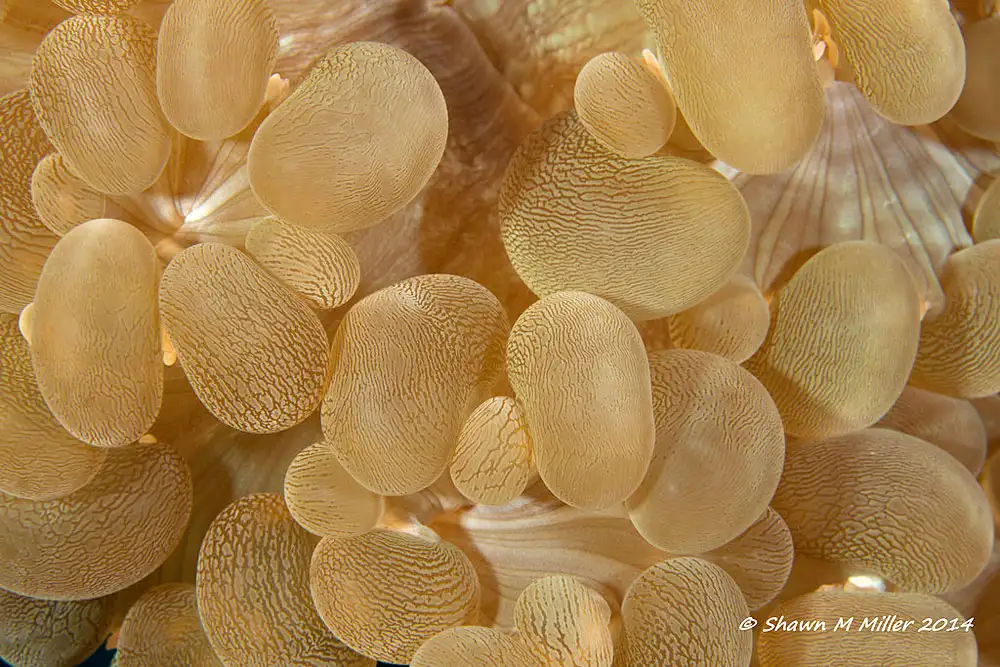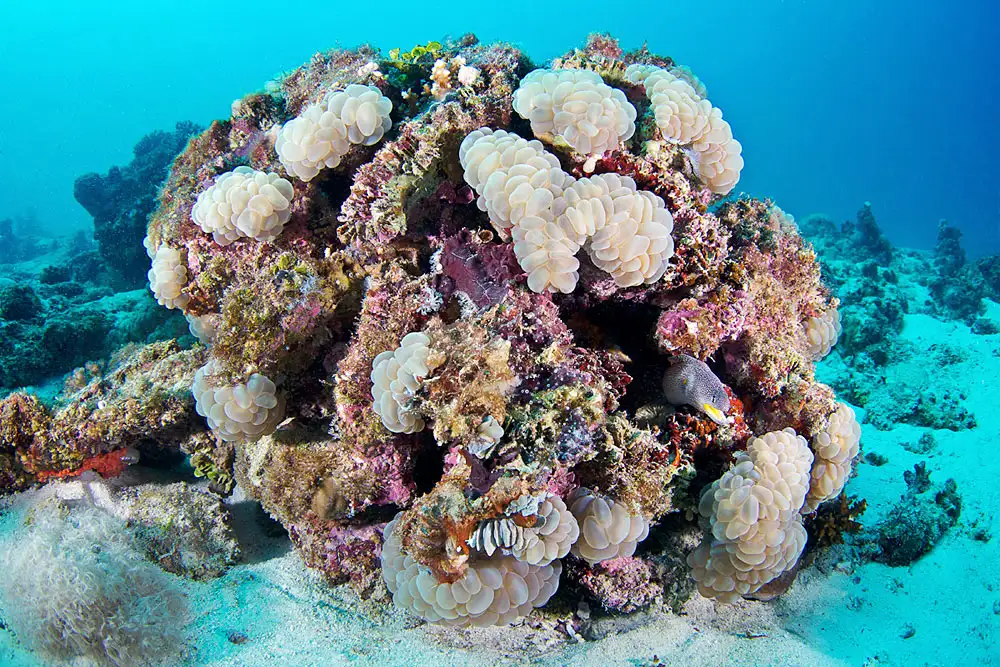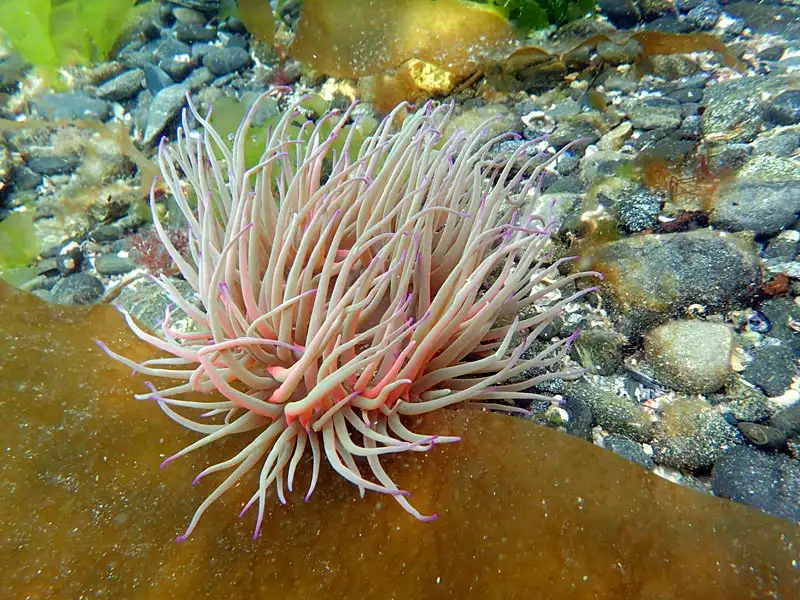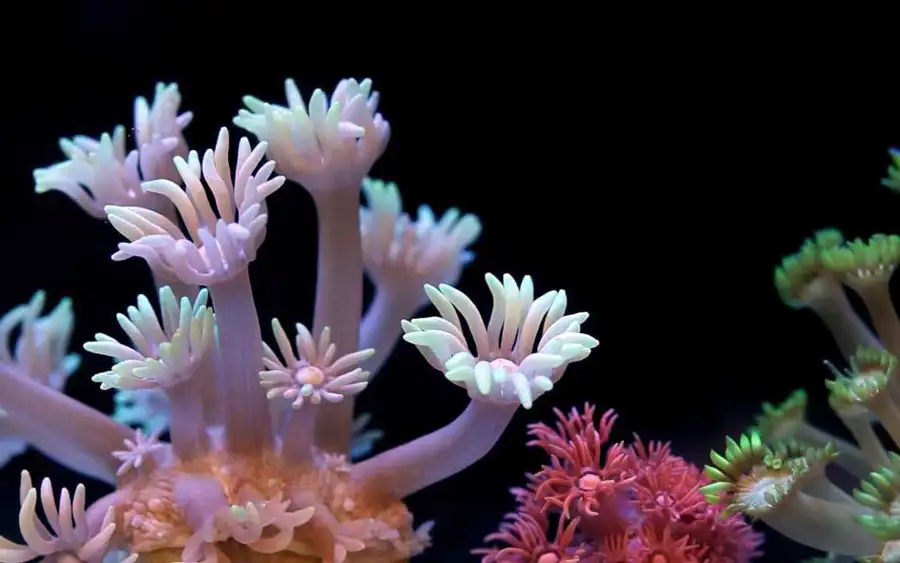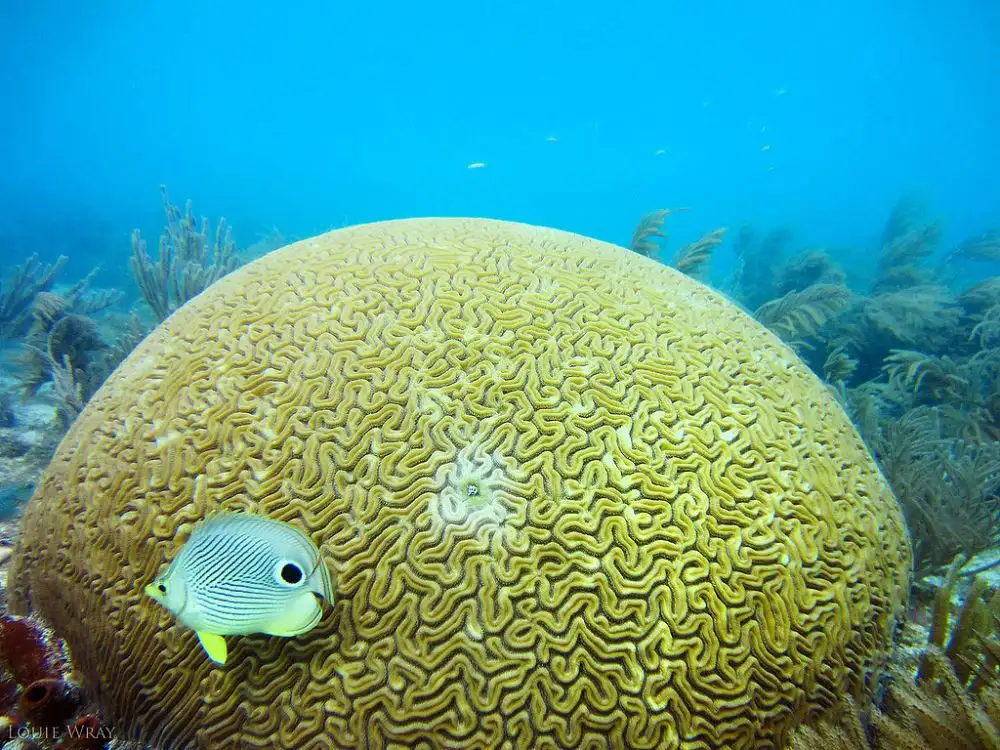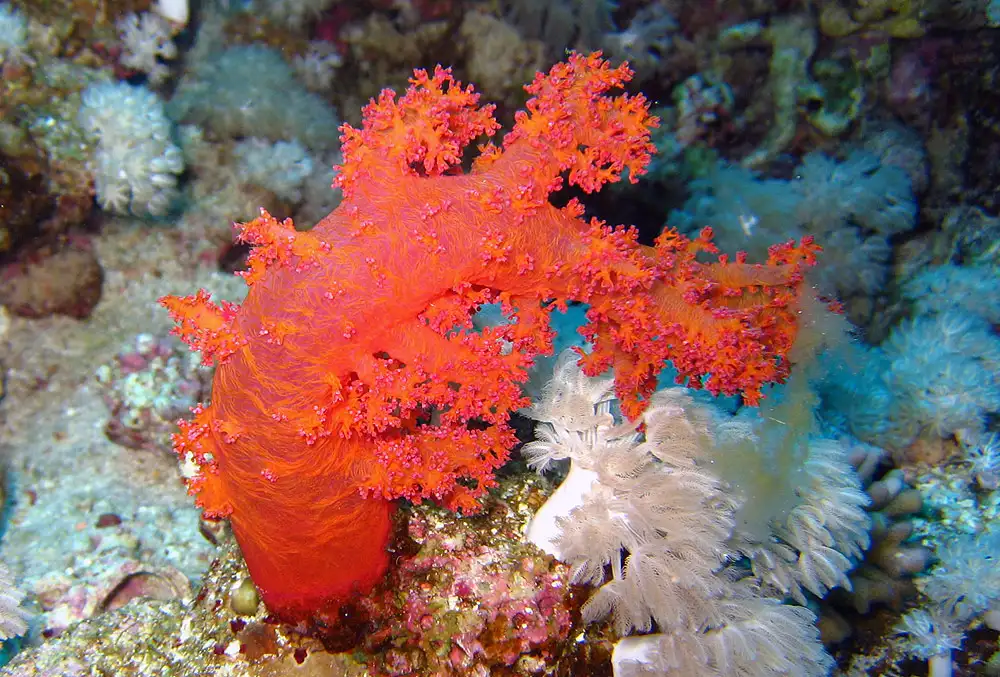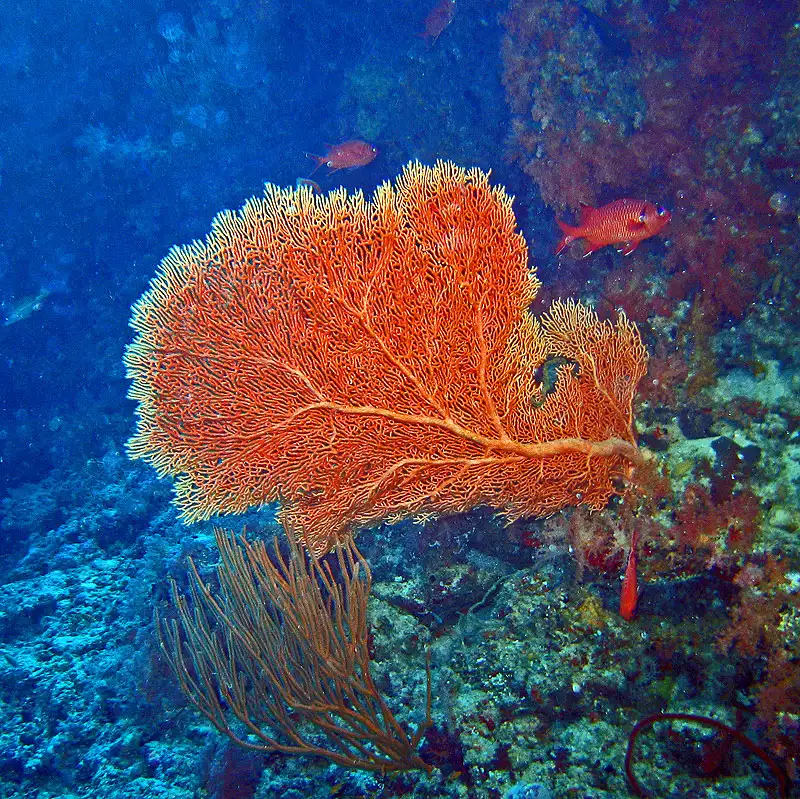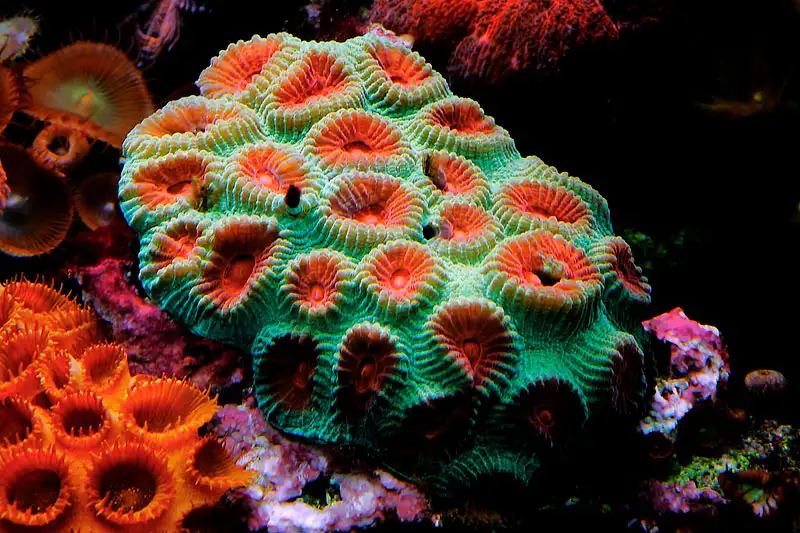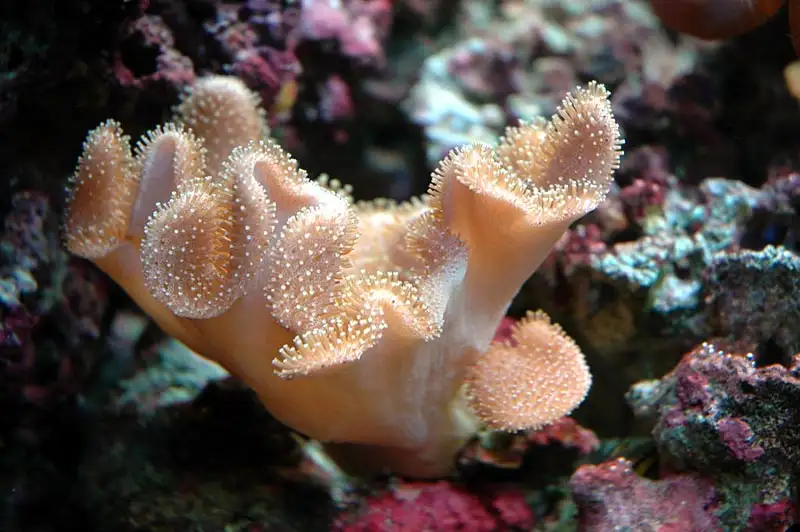Bubble Coral
IUCN
LCBasic Information
Scientific classification
- name:Bubble Coral
- Scientific Name:Plerogyra sinuosa
- Outline:Echinodermata
- Family:Euphylliidae Plerogyra
Vital signs
- length:Colony commonly 15–40 cm; up to 60+ cm
- Weight:Varies with colony size; no single value
- lifetime:Long‑lived reef builder (multi‑year to decades)
Feature
Diel bubble inflation; photosymbiosis plus particle/zooplankton feeding; budding and fission; fragile vesicles.
Distribution and Habitat
Indo‑Pacific reef slopes/back‑reefs/cave mouths with moderate light and low–moderate flow (~5–30 m).
Appearance
Pearly translucent vesicles by day; tentacles at night; sinuous skeletal valleys; beige to pale green tones.
Details
Plerogyra sinuosa, commonly called the bubble coral, is a photosymbiotic reef‑building coral in the familyEuphylliidae. By day the surface is covered with inflated, translucent vesicles (“bubbles”); at night the vesicles deflate and the colony extends feeding tentacles. It hosts Symbiodiniaceae, gaining most energy from photosynthesis and supplementing with suspended particulates/zooplankton.
Ecology & Biology
Diel morphology: daytime inflation increases light capture and shields the skeleton; at night the bubbles retract and tentacles feed actively.
Nutrition: primarily photosynthesis with particle/zooplankton capture via mucus and tentacles.
Reproduction: sexual broadcast spawning/planulation and asexual budding/fission; careful fragmentation is possible in aquaculture.
Identification
Colonies are usually massive/lobate and spread along the substrate. Bubbles are pearly white to beige or pale green. At night, the sinuous septa/valleys of the skeleton become apparent. Superficially similar to Physogyra lichtensteini, but Plerogyra typically has rounder vesicles and more continuous valley ridges; definitive ID may require skeletal inspection.
Colony size & Longevity
Colony size: commonly 15–40 cm; up to 60+ cm under favourable conditions.
Vesicle size: typically ~0.5–2 cm diameter, varying with light and flow.
Life: long‑lived reef builder; multi‑year to decades on stable reefs.
Range & Habitat
Widespread in the tropical Indo‑Pacific on reef slopes, leeward/back‑reef faces and cave mouths with moderate light and low–moderate flow, typically at ~5–30 m depth; sensitive to harsh direct light and heavy sedimentation.
Threats & Conservation
Thermal stress & bleaching from elevated sea temperatures.
Sedimentation/pollution that smother vesicles and reduce photosynthesis.
Physical damage from anchoring, trampling and improper handling/high‑flow in aquaria.
IUCN: sources vary; to maintain consistency here we mark it as Not Evaluated (NE). Priorities: protect key reef tracts, manage nutrients/sediments and regulate trade/transport.
FAQ
Q1. Are daytime bubbles a disease? No—this is the normal daytime form for light capture and protection; they retract at night for feeding.
Q2. Tankmates? Night tentacles can be sweeper‑like and stinging; keep distance from neighbouring corals.
Q3. Husbandry tips? Moderate light, gentle to moderate flow, stable alkalinity/Ca/Mg; avoid harsh light/flow and sediment accumulation.
Q4. Distinction from Physogyra? Plerogyra tends to have rounder vesicles and more continuous sinuous valleys; skeletal features and locality help confirm.




